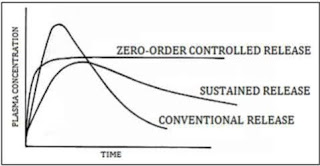Step of New-Product Development
In the pharmaceutical industry,
the development of new products involves several challenges. Here is a note on
the challenges:
1.
Idea generation: The first challenge is to determine whether an idea is worth
considering. This involves evaluating whether the idea aligns with the
company’s objectives and if it requires modifications to the existing product
or marketing program.
2.
Idea screening: The second challenge is to screen the product idea to ensure it
is compatible with the company’s objectives, strategies, and resources. This
step helps filter out ideas that may not be feasible or aligned with the
company’s goals.
3.
Concept development and testing: The third challenge is to develop and
test a concept that consumers would be willing to try. This involves creating a
concept that resonates with the target audience and conducting tests to gather
feedback and validate its potential.
4.
Marketing strategy development: The fourth challenge is to develop a
cost-effective and affordable marketing strategy. This involves identifying the
target market, positioning the product, and determining the most effective
channels and tactics to reach potential customers.
5.
Business analysis: The fifth challenge is to analyze whether the product will meet
the profit goals. This involves conducting a thorough analysis of the market,
competition, pricing, and demand to assess the product’s potential
profitability.
6.
Product development: The sixth challenge is to develop a technically and commercially
sound product. This involves ensuring that the product meets quality standards,
regulatory requirements, and customer expectations while also being
economically viable.
7.
Market testing: The seventh challenge is to test the product in the market to
assess its performance and whether it meets expectations. This involves
monitoring sales, gathering customer feedback, and making necessary adjustments
based on the market response.
8.
Commercialization: The final challenge is to ensure that the product’s sales are
meeting expectations. This involves ongoing monitoring of sales performance,
customer satisfaction, and market trends to make informed decisions and
optimize the product’s commercial success.




Comments
Post a Comment
Thanks